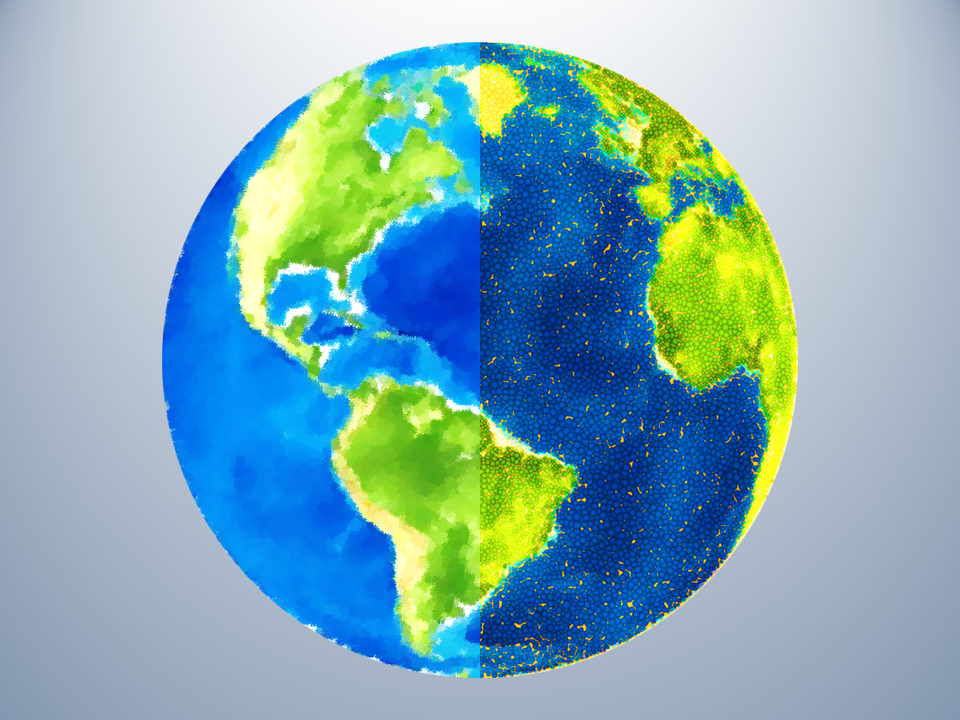Pick Up
1329. Data Capturing Climate Change

1329. Data Capturing Climate Change
According to the State of the Climate report, a supplement to the Bulletin of the American Meteorological Society (BAMS), 2024 saw record-high greenhouse gas concentrations, global land and ocean temperatures, sea level, and ocean heat content. Glaciers also experienced their largest annual ice loss ever.
This report is widely regarded as the most authoritative assessment of the Earth's climate. Based on observations from satellites, weather stations, ocean buoys, and field surveys, it provides a comprehensive overview of Earth's key indicators and a reliable record of ongoing climate change. Earth's main atmospheric greenhouse gases—carbon dioxide (CO2), methane, and nitrous oxide—once again reached record high concentrations in 2024. Global average CO2 concentrations reached 422.8±0.1 ppm, a 52% increase from the pre-industrial period of approximately 278 ppm. The increase in global average CO2 concentrations from 2023 to 2024 was 3.4 ppm, matching the highest level since the 1960s, set in 2015/16. Additionally, the Earth's annual surface temperature record was broken for the second consecutive year, with various scientific analyses indicating that Earth's annual surface temperature was 0.63-0.72 degrees Celsius higher than the 1991-2020 average. A strong El Niño event, which began in mid-2023 and ended in the Northern Hemisphere spring of 2024, contributed to this record-high temperature.
Data records from the European Space Agency's (ESA) Climate Change Initiative contribute to these findings, providing a consistent, long-term dataset on key climate variables—including sea level, sea ice, glaciers, permafrost, and soil moisture—particularly from decades of satellite observations.
Soil Moisture: Satellite Microwave Data Reveal Regional Differences
Global data showed significant regional variations in soil moisture. While soil moisture levels in areas such as the Sahel rose to twice the normal level, much of the Americas experienced severe drought. Nearly half of the United States experienced record-breaking drought. Because soil moisture affects everything from crop growth to wildfire risk, this project will provide essential information for drought and flood risk assessments.
Lake Surface Temperature Highs and Lows in 2024
Satellite observations from the Climate Change Initiative Lakes Project revealed record-high lake surface temperature anomalies worldwide, with more than half of the lakes surveyed showing anomalies exceeding +0.5°C compared to the 1995-2020 baseline. This provides scientists with important information on the impacts of climate change on freshwater ecosystems and water resources.
Permafrost: Rock Glacier Movement Accelerates as Permafrost Melts
The movement rate of rock glaciers (flowing ice covered by rocks and sediment) in Central Asia has consistently increased since the 1950s, with a notable acceleration between 2010 and 2020. This trend mirrors patterns seen in mountain ranges around the world, indicating that permafrost is rapidly responding to climate change, with changes in surface temperature and hydrology reflecting these changes. Arctic permafrost stores approximately 1.7 trillion tons of frozen and thawed carbon. Anthropogenic warming could release unknown amounts of this carbon into the atmosphere, impacting the climate through a process known as the permafrost-carbon feedback.
The report also provided important measurements in remote areas with few weather stations and identified extreme hotspots on multiple continents where land temperatures exceeded 60°C.
The report also highlighted some encouraging news: In 2024, stratospheric ozone concentrations in the Northern Hemisphere reached their highest levels since satellite observations began in 1979, with some regions recording their highest concentrations since the 1960s. Conditions in the Southern Hemisphere also showed improvement, recovering from the low ozone concentrations recorded between 2020 and 2022 due to pollution from Australia's massive wildfires and volcanic eruptions.
Contributor: IIYAMA Miyuki, Information Program
